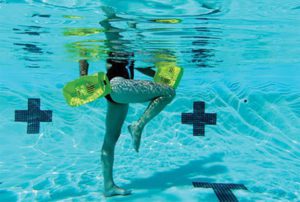 Aging is not the most welcomed word, but for the most part, it’s unavoidable. Living in Florida provides a much more active lifestyle for many individuals. With the growing “aging” population here, exercising and doing activities in the heat can produce some unwanted injuries.
Aging is not the most welcomed word, but for the most part, it’s unavoidable. Living in Florida provides a much more active lifestyle for many individuals. With the growing “aging” population here, exercising and doing activities in the heat can produce some unwanted injuries.
Our bodies self-regulate heat by sweating and also through radiating heat back into the atmosphere. When we sweat, we also perspire potassium and sodium. Both of these minerals help to control nerve function, water, balance, and heart rhythm.
If you suffer from any heart conditions, the loss of these minerals can be detrimental to your cardiac condition and your balance.
When we consider the issues of balance disorders, they can be caused by heart problems, vertigo, vestibular disorders and infections. Staying active is important to healthy aging, but what about when balance disorders are an everyday occurrence?
If you suffer from balance disruptions of any kind, one great way to stay active and age healthfully is to incorporate aquatic therapy sessions into your routine. Aquatic Therapy works on balance to increase safety and reduce the risk for falls. In the water the patient is safe to challenge their balance without fear of injury present on land.
A professional rehabilitation therapist can help increase your range of motion and flexibility within aquatic therapy treatment, all while keeping you safe and balanced. From underwater treadmills to bikes, weights, belts, and tubes, there are many different types of equipment that can assist you in water treatment, but it is sometimes just as beneficial to use no equipment at all in aquatic exercising because your own body’s resistance under water is sufficient. The specially trained therapists will decide which type of treatment is right for your specific needs.
The Aquatic Therapy Difference
On land, walking is a very beneficial way to workout with little impact, but just because it’s considered a low impact activity, doesn’t make it completely safe. Did you know that three times your body weight is the amount of pressure put on your knee joints while walking? For example, if you weigh 180 pounds, then 540 pounds of pressure is on your knee joints with every step.
As opposed to walking on land, when the body is submerged in water, it has buoyancy, which reduces stress on joints and muscles because the water opposes the weight of the immersed limbs. If an individual that weighs 180 pounds is under water, that person will only weigh about 10 pounds in the water. Since our bodies are approximately 15-18% fat, the fat weighs virtually nothing in the pool, which helps with agility and promotes a feeling of lightness. This is extremely beneficial for protecting our joints, especially if you suffer from arthritis, fibromyalgia, multiple sclerosis or other painful disorders.
Aquatic Therapy Outcomes
If you are immersed up to your waist, your body will weigh only 50% of its actual weight, and if you are immersed to your chest, it’s approximately 25% of your weight. This weight reduction is helpful to relieve pain and to protect weak bones, muscle tears or joint friction. Water exercise can help you lose weight, as you will burn calories, and it also promotes relaxation throughout the entire body, which is beneficial for healing and overall health and wellness.
Individuals that have undergone aquatic therapy have shown great results in improving their balance. Many people no longer require canes or walkers after their sessions have concluded. Each session is approximately 30 minutes long.
There have been significant studies on the benefits of aquatic therapy for individuals that suffer from cardiac diseases and disorders. These cases have proven that the level of oxygen in the blood increases in water, which is ideal for most vascular issues. The oxygen consumption (VO2) is three times greater in water than on land. Working large muscle groups leads to this uptake of oxygen or VO2, but doing a lot of running and leg-work on land increases the heart rate at a greater level than with water-based therapy. For obvious reasons, maintaining a lower heart rate is ideal for those suffering from any heart ailments. Staying cool while working out is also critical for patients with heart disorders, due to the hot weather’s likelihood of causing cardiac palpitations and other vascular issues.
Freedom Rehab Aquatic Therapy
The specially trained and experienced staff members at Freedom Rehab Aquatic Therapy are ready to answer any questions you might have and to get you in the water, regaining your balance and aging healthfully.
To find out more about how aquatic therapy can help you, please visit, www.freedomrehabaquatictherapy.com, or call
Freedom Rehab at 941-400-1505.








